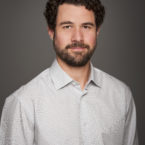Abstract
In the absence of an effective vaccine to prevent COVID-19 it is important to be able to track community infections to inform public health interventions aimed at reducing the spread and therefore reduce pressures on health-care units, improve health outcomes and reduce economic uncertainty. Wastewater surveillance has rapidly emerged as a potential tool to effectively monitor community infections for severe acute respiratory syndrome coronavirus 2 (SARS-CoV-2), through measuring trends of viral RNA signal in wastewater systems.
In this study SARS-CoV-2 viral RNA N1 and N2 genes are quantified in solids collected from influent post grit solids (PGS) and primary clarified sludge (PCS) in two water resource recovery facilities (WRRF) serving Canada’s national capital region, i.e., the City of Ottawa, ON (pop. = 1.1M) and the City of Gatineau, QC (pop. = 280K). PCS samples show signal inhibition using RT-ddPCR compared to RT-qPCR, with PGS samples showing similar quantifiable concentrations of RNA using both assays. RT-qPCR shows higher frequency of detection of N1 and N2 genes in PCS (92.7, 90.6%) as compared to PGS samples (79.2, 82.3%). Sampling of PCS may therefore be an effective approach for SARS-CoV-2 viral quantification, especially during periods of declining and low COVID-19 incidence in the community.
The pepper mild mottle virus (PMMV) is determined to have a less variable RNA signal in PCS over a three month period for two WRRFs, regardless of environmental conditions, compared to Bacteroides 16S rRNA or human eukaryotic 18S rRNA, making PMMV a potentially useful biomarker for normalization of SARS-CoV-2 signal. PMMV-normalized PCS RNA signal from WRRFs of two cities correlated with the regional public health epidemiological metrics, identifying PCS normalized to a fecal indicator (PMMV) as a potentially effective tool for monitoring trends during decreasing and low-incidence of infection of SARS-Cov-2 in communities.
Researchers
-
Alex MacKenzie
Senior Scientist, CHEO Research Institute
-
Tommy Michel Alain
Senior Scientist, CHEO Research Institute
-
Tyson Graber
Associate Scientist



